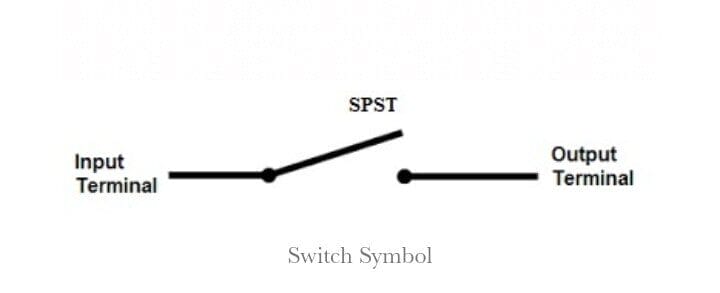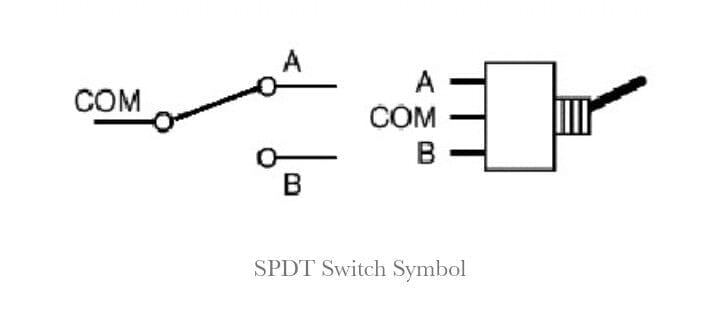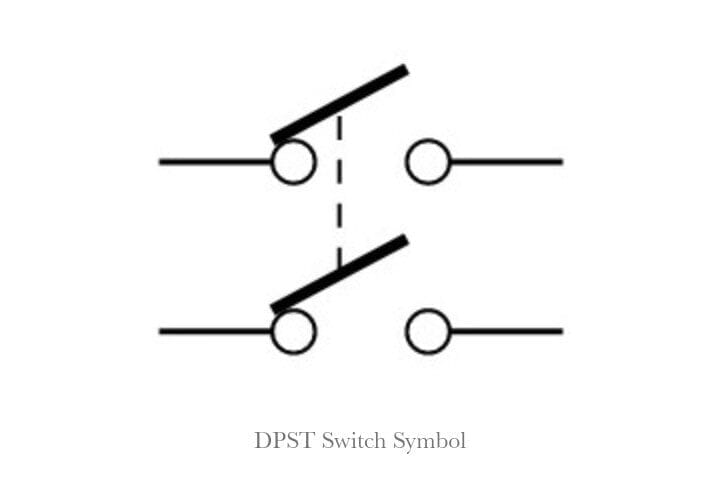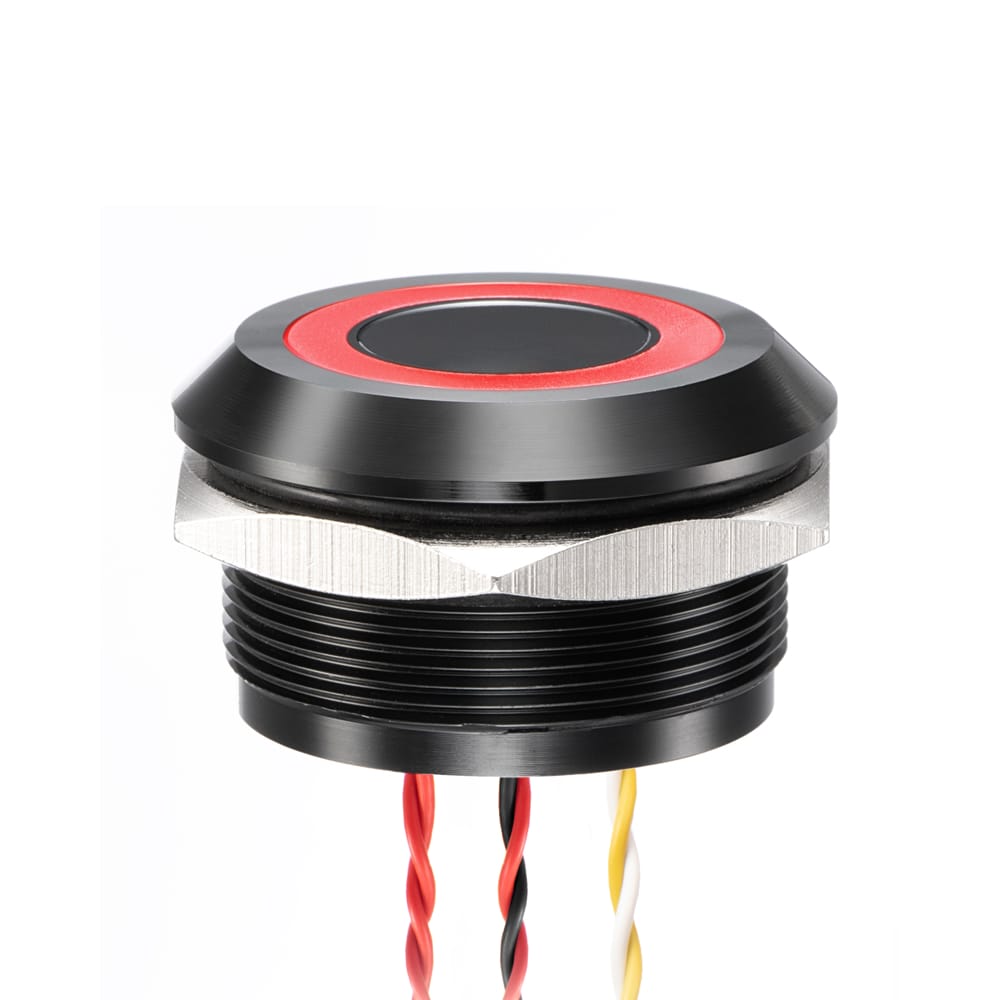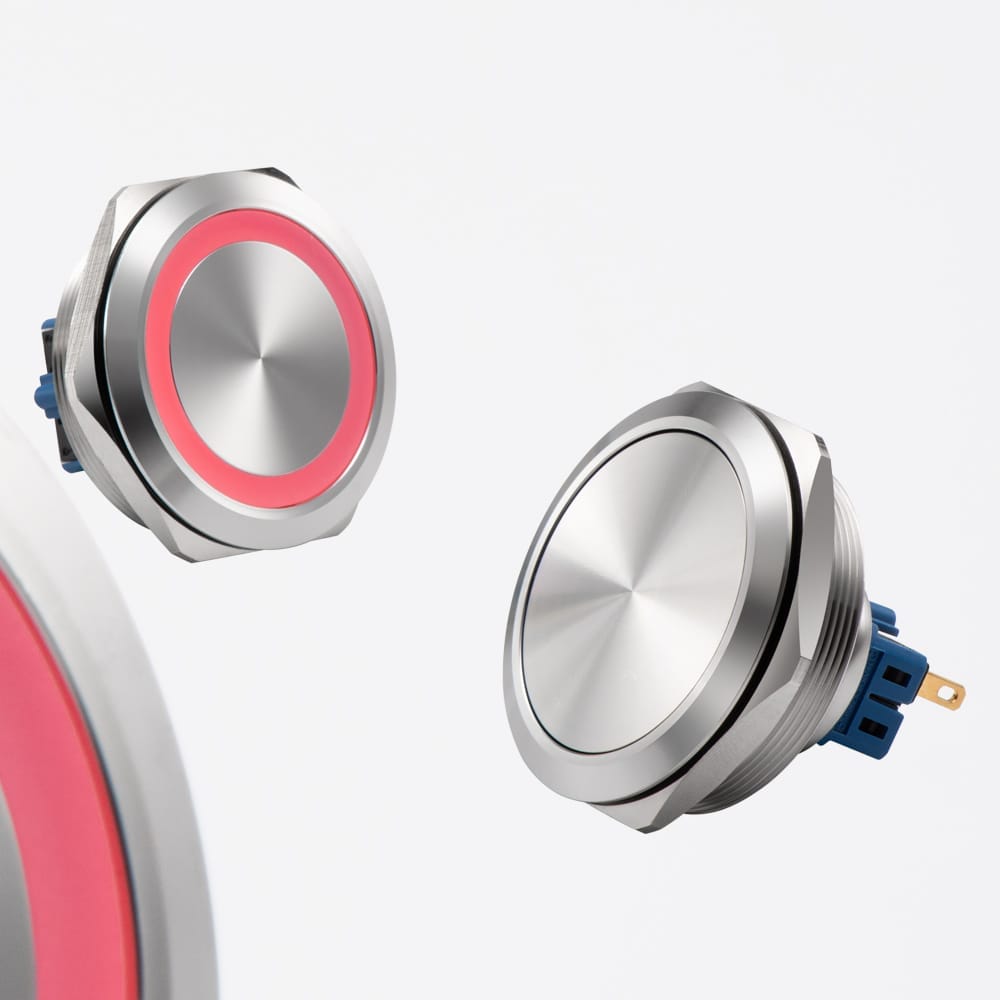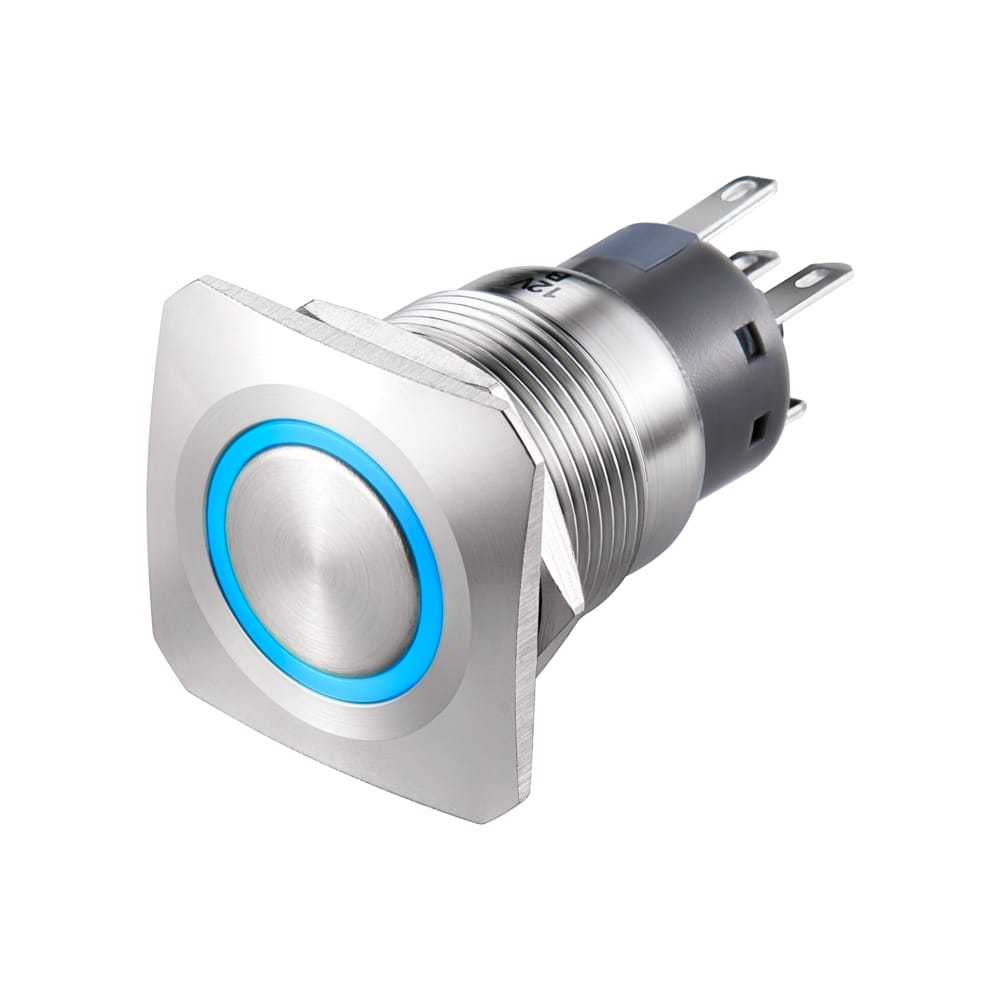
Switches are an integral part of electrical circuits, serving as fundamental components that control the flow of electricity. They are used in various applications such as household appliances, industrial machinery, electronic devices, etc. But have you ever wondered about the components and unique features of a switch? Poles and throws are key elements that define the functionality and capabilities of switches.
They decide how a switch connects or disconnects electrical circuits. Not only this, but the number of poles and throws also helps classify switches. This article provides detailed information about poles and throws and the various types of switches like SPST, SPDT, DPST, and DPDT. Continue reading!
What are Poles and Throws?
In electronics, a pole refers to the number of circuits a switch or relay can control. Typically, a single pole switch means it can only control one circuit. On the other hand, throws refer to the number of output connections each switch can make. It’s also known as the number of positions a given pole attains. Usually, a single-throw switch only has one position (on or off) while a double-throw switch can acquire two positions.
Types of Switches
Now let’s discuss the various types of switches based on the number of poles and throws along with their working and types:
Single Pole Single Throw (SPST)
The single pole single throw (SPST) switch has only one input and output. It’s our typical on/off switch that controls one circuit at a time. The symbol of the SPST switch is given as:
The working of an SPST switch is simple – once a user pushes the switch button, the contacts inside the switch close, allowing current flow. And as soon as you turn off the switch, the contacts separate, interrupting the current flow.
Take the example of a light bulb; when you turn the bulb switch on, the contact closes, and current flows, which allows the bulb to glow. Conversely, when you turn off the switch, the circuit breaks, separating contacts, and no current flows. As a result, the bulb’s glow goes off.
Here are the common applications of an SPST switch:
- Doorbell Buttons: Momentary push button SPST switches find applications in doorbell buttons as they complete a circuit when pressed, producing a chime sound.
- Security Systems: SPST switches are also quite useful in security systems. They break the circuit when someone tries to tamper with the security devices, triggering an alarm and alerting everyone.
- Lighting Systems: You can use SPST switches to turn a light on or off in your residential or commercial building with a press of a button.
The following are the advantages of an SPST switch:
- Affordable: SPST switches are quite affordable due to their simple design and easy construction, making them suitable for various applications.
- Easy to Wire: An SPST switch doesn’t have complex wiring. You’ve to make a few connections, and the switch is ready for operation, making it quite popular among DIY enthusiasts.
- High Load Capacity: Surprisingly, SPST switches are capable of handling high current and voltage, which is ideal for applications where significant electric power needs to be controlled.
Single Pole Double Throw (SPDT)
Another switch type based on the number of poles and throws is Single Pole Double Throw (SPDT). These switches have one pole (input) and two throws (outputs). You can use them to control two dissimilar circuits through a single input. They can either be controlled manually or via an electromagnetic coil. Here’s the symbol of a SPDT switch:
Typically, an SPDT switch maintains an On/On position. This means the switch is completing one of the two circuits that it controls. For instance, if the switch is at On-1, the only pole or input is completing the circuit with the throw or output 1. However, if it’s at On-2, this means the input is completing a circuit with the second throw or output 2.
Here are the applications of SPDT Switches:
- ABB/Siemens VFDs (Variable Frequency Drives): SPDT switches can be used in VFDs to control various parameters, such as setting different speed profiles or modes of operation for electric motors.
- Audio Equipment: In audio applications, SPDT switches help select between different signal paths or switch between various effects in audio equipment like speakers.
The benefits of a SPDT switch are given as:
- Highly Reliable and Durable: SPDT switches have a robust design that contributes to their durability in challenging conditions and reduces the risk of mechanical failure.
- Higher Switching Currents: SPDT switches can also handle higher currents, which makes them ideal for controlling relays, pumps, and motors in industrial applications.
Double Pole Single Throw (DPST)
As the name suggests, the double Pole Single Throw (DPST) switch has 4 terminals – two inputs and two outputs. Each input has one corresponding output, and the switch is used to control two independent circuits simultaneously. A DPST switch has an On/Off configuration where its terminals either maintain an On or Off position. The symbol of this switch is given as:
The working of a DPST involves the control of two different circuits from a single actuator, which can be a toggle, lever, or push button. Each switch has four terminals, including a set of contacts (two poles) and two throws (the position these poles acquire). Let’s suppose these terminals are named 1,2, 3, and 4. Terminals 1 and 3 are the first pair, and 2 and 4 are the second. Both these pairs of terminals are electrically isolated from each other.
In On Position:
- When the switch is turned on, terminals 1 and 3 connect, allowing current flow and completing the 1st circuit. At the same time, terminals 2 and 4 connect to each other creating a 2nd circuit.
In Off Position:
- As soon as you toggle the switch to the off position, both pairs of terminals separate, and the current flow stops.
The primary thing that separates the DPST switch from others is that both circuits are isolated from each other. This is advantageous in situations where you’ve to deal with varying voltage loads.
Let’s discuss the common applications of a DPST switch:
- Thermostat: DPST switches are commonly used in thermostats to control electric heating loads by automatically opening or closing contacts and detecting a change in external temperature.
- Industrial Equipment: These switches are used in industrial equipment to control multiple power circuits simultaneously.
Here are the benefits of a DPST switch:
- Equivalent to 2-SPDT Switches: A DPST switch combines the functionality of two single-pole double-throw (SPDT) switches in one unit, simplifying wiring and conserving space in electrical installations.
- Functions with Two Independent Circuits: DPST switches can control two different independent circuits, allowing for flexibility in operations.
Double Pole Double Throw (DPDT)
Double Pole Double Throw or DPDT switches are the most advanced types of switches on the list. They have two input terminals, and each input has two output terminals totaling around six terminals. The DPDT switch symbol is shown below:
Typically, DPDT switches control two separate circuits. In this, two distinct sets of contacts are arranged on two stacked plates. Each set of contacts corresponds to its own pole, which gives the switch a double pole designation.
The operation of a DPDT switch is quite simple. When the switch is moved to a specific position, the electric current enters through one of the poles and passes through the first set of contacts associated with that pole.
Subsequently, the current passes through the second set of contacts associated with the same pole and exits through the other pole of the switch. This arrangement provides you with versatile control over two different circuits.
The applications of a DPDT switch are given as:
- Robotics: In robotics, DPDT switches can be used to control motor direction, activating/deactivating different actuators and sensors.
- Telecommunication Systems: DPDT switches are also useful in telecommunication systems for signal routing and switching between different communication channels or modes.
Here are the advantages of a DPDT switch:
- Cost-Effective: DPDT switches are quite affordable compared to other switches of the same category, making them perfect for various applications.
- Lightweight: These switches typically have a lightweight and compact design, so they can easily be integrated into different electronic devices and equipment.
- Failover Capabilities: DPDT switches offer failover capabilities by providing independent paths for current flow, ensuring continuous equipment operation in case of a component failure.
Best SPST, SPDT, DPST, DPDT Switch Options to Try!
Here are some top SPST, SPDT, DPST, and DPDT switches:
30mm Piezo Push Button
First, we have the 30mm Piezo Push Button, which is a highly reliable switch that is best suited for demanding applications. This push-button switch features a smooth metal, easy-to-clean surface that takes the hassle out of maintenance. It has an extensive lifespan of 50 million cycles, so you can expect consistent performance for a long time.
In the dark, you can benefit from its illumination feature, either ring or dot. Not only this, but the IP68 or IP69K rating protects this switch from dust and moisture as well as water and high-pressure cleaning. With SPST (NC and NO) configuration, this switch requires no external power for operation, making it highly energy efficient.
Key Features
- Ring or dot illumination options for visual indication
- Sealed to IP68 or IP69K standards when mounted on a panel for excellent protection in a challenging environment
- Contact arrangements include SPST Normally Open (N.O.) or Normally Closed (N.C.)
- Made of Aluminium 6061 T651 or Stainless Steel 316L
L19B High Current Anti-Vandal Switch
Next, we have the L19B High Current Anti-Vandal Switch, a versatile switch specifically designed for applications requiring high current capacity. The Anti-Vandal IK09 rating of this switch ensures its efficiency in a demanding environment and provides resistance against tampering and vandalism.
In addition, the IP65 rating safeguards the product from dust, debris, and moisture infiltration. It’s available in both illuminated and non-illuminated versions and comes in various contact types, including SPDT (NO+NC), SPST (NO), and SPST (NC).
This switch can easily support a wide range of current ratings, varying from 3A to 21A, making it compatible with various applications. You don’t have to worry about extreme temperatures causing damage to switch components as it works smoothly within a temperature range of -25℃ to +85℃.
Key Features
- Contact types include SPDT (NO+NC), SPST (NO), and SPST (NC) to suit different circuit configurations.
- High current capacity options available: 3A, 5A, 8A, 10A, 15A, 16A, 20A, 21A to support various electronic devices
- Anti-Vandal IK09 rating for resistance against vandalism and physical tampering
- Has a mechanical lifecycle of 2,000,000 cycles and an electric lifecycle of 50,000 cycles, serving you for years
L40 Series Illuminated Anti-vandal Switch
The L40 Series Illuminated Anti-vandal Switch is a rugged and highly durable switch with an IP65 rating. It comes with ring and dot illumination for enhanced visibility and a smooth user experience.
This switch offers exceptional flexibility with SPDT or DPDT configurations and multiple switch functions. The applications of this Langir switch are diverse and include kiosks, ticket dispensers, security devices, audio/visual equipment, industrial controls, and electrical housewares.
Key Features
- IP65 rated for dust and moisture protection, suitable for indoor and outdoor use
- Dot or ring illumination options are available for enhanced visibility
- Supports SPDT or DPDT configurations with multiple switch functions
- Offers multiple illumination voltage options to accommodate different power supplies
Square Bezel Anti-Vandal Switch
The Square Bezel Anti-Vandal Switch is a robust and versatile choice for control panels and industrial applications. This switch features both SPDT and DPDT configurations, offering excellent flexibility. Available in 19mm and 22mm diameter panel cutouts, this switch is second to none in functionality.
You have the option to choose RGB LED illumination for clear visual indication, with choices of dot, ring, or symbol illumination to suit specific needs. The IP65 rating shields against dust and moisture, making it suitable for indoor and outdoor use.
What truly sets this switch apart is its robust electrical rating of 5A at 250VAC, which handles demanding and high-voltage applications. It’s highly durable, with a mechanical life of 1,000,000 cycles and an amazing electrical life of 50,000 cycles.
Key Features
- Available in 19mm or 22mm diameter panel cutouts
- IP65 rated for dust and moisture protection, suitable for indoor and outdoor use
- Offers multiple function options, including SPDT & DPDT configurations
12mm Piezo Metal Push Button Switch
The 12mm Piezo Metal Push Button Switch from Langir features a durable metal surface that’s easy to clean. With a long life expectancy of around 50 million cycles, this switch ensures Reliable performance over extended periods.
The switch is sealed to IP68 and IP69K standards when mounted on a panel, protecting it against water and other contaminants. On top of this, its one-piece construction and flat actuation surface further prevent the intrusion of liquids, so you can use this switch in challenging conditions. The best part is the operating temperature range of this Langir product, which varies from -40°C to 75°C.
Key Features
- Flat actuation surface prevents intrusion of liquids or contaminants, suitable for medical and food processing industries.
- Easy-to-clean metal surface, ideal for applications requiring frequent surface cleaning
- Operating temperature range from -40°C to 75°C, making it versatile for various environments
FAQs
What is the difference between SPST and SPDT?
SPST switches are the ones that control one circuit using a single set of contacts and have two positions: ON and OFF. SPDT has two output terminals, and these switches also control one circuit but connect the input terminal to either of the output connections.
What are Normally open and Normally closed circuits?
Normally Open (NO) is a circuit condition in which the contacts are open (no current flow) when the switch is in its normal or resting state. On the other hand, Normally Closed indicates a circuit condition where the switch contacts are closed (current flows) when the switch is in its normal or resting state.
What Does Double Throw Mean?
Double throw refers to a switch with one common input terminal connected to two of the output terminals. This means the switch has two possible positions for the output connection, allowing for switching between two different circuits or paths.
Conclusion
Poles and throws are the critical features of a switch that control the connectivity and functionality of circuits. Typically, the number of poles determines how many separate circuits can be controlled by the switch. While the throws dictate the number of positions or output connections, each switch can make.
There are various types of switches depending upon the poles and throws configuration. These include SPST, SPDT, DPST, and DPDT. If you are searching for any of these switches for your applications, Langir has you covered. We offer highly durable SPST, DPST, and SPDT switches catering to your robotics or automotive systems applications.
Contact us today to find the right switch for your needs!
Send your inquiry now
All Langier News:
Read Moreelectronica 2024 Hall-Stand No.: A2 160 November 12-15, 2024 Tr...

 English
English 简体中文
简体中文
